Optimizing Your Local Campaigns for a “Post-Digital” Marketing World
What is a post-digital world? No, it is not a world in which the machines have revolted and we have been sent back to the Stone Age. The post digital world is our world now, one in which digital marketing is subsumed by marketing as a whole.
Individualizing digital marketing as separate from the rest is no longer a viable definition. “Marketing is the product.” Everything else is secondary; accounting for the developments in technological trends or the increasing pervasiveness of social media are simply part of marketing as it is today.
The key for any local business or SEO expert adapting in the local market is responding to the developing trends of post-digital user behavior. What new technologies, applications, or online services are now ready-at-hand to the user, and how can your business optimize itself towards that streamlined experience?
Examining social media trends and blossoming new online services through the lens of lead generation and increasing foot traffic can provide surprisingly productive insights on how to improve your local business.
Trend #1: Brave New World of Social Media
The world of social media has grown exponentially in the past few years with the introduction of new apps like Snapchat and huge updates to already existing social media platforms like Facebook Professional Services. With more and more social media apps allowing file sharing and live video, developing micro-campaigns that utilize the diversity of social media channels to broaden your audience is a great way to make the most out of today’s smartphone consumer.
Social media as a whole is vulnerable to ebbs and flows of user behavior. After a recent spike in the “broadcasting” mentality of social media (posts not meant for response), we are now seeing a return to the “communicating” side of the coin.
Sites like Buzzfeed play off of this behavioral shift, and emphasize engagements over sales to adapt for the communication model of social media. The increase in communication-based social media use means that users are becoming more valuable as autonomous advertising bases. This means that you need to be getting ahold of these walking, talking billboards for your local campaigns!
2 Ways to Get Ahead of the Curve with Social Media
1. Get a Geofilter for Events or Weekends
Local marketing events are great ways for companies to not only strut their stuff, but also build brand awareness. You can check out some of the events and opportunities that are coming up in 2017 on your city’s chamber of commerce page. You’ll usually see a long list of sponsors at most events filled with different startups and creative firms all offering their services or free assessments.
If you can’t afford to sponsor an event, creating a Snapchat geofilter that advertises your brand for the event location is another great option. According to Snapchat, “Geofilters are special overlays that communicate the “where and when” of a Snap in a fun way.”
Via Gary Vaynerchuk
Make sure, however, that if you are investing in geofilters you know how to best optimize this tactic for the right audience at the right time. Snapchat’s guidelines for their geofilters are fairly vague, but if you know them well and have a keen eye for design and optimization, they’re a great tool at your disposal.
It turns out that Snapchat doesn’t allow businesses to access community geofilters which have the widest access radius (because they’re built for cities). For similar user-friendly reasons, your geofilters aren’t allowed to have any logos or trademarked material – they also have to be 100% original.
This means that you’re going to be relying pretty much entirely on the creativity of your design. Optimizing your geofilter design can be simplified into a few rules to live by:
Make it relevant to local users – If you are entirely reliant on a visual design to appeal to the user, and are still trying to emphasize the local market that you’re targeting, using landmarks or famous cultural notes is key (if you’re in San Francisco and your geofilter is missing the Golden Gate Bridge, you’ve probably done something wrong).
Don’t use too much of the screen – Any snapchat user will tell you that a geofilter that takes up too much of the screen is just going to be skipped over. There are a few exceptions (like the Brooklyn Bridge community geofilter, see below), but for the most part, keeping the space percentage to under 20% is a solid rule of thumb.
Views vs. uses – If you’re investing in geofilters to better access the local markets it’s safe to say that you’re going to want to test just how effective they are. The testing for snapchat isn’t quite that advanced yet, and you can see how that may affect your testing here, but what you want to keep in mind (for starters, at least) is that there is a different between “views” and “uses,” where the first records how many times your geofilter was considered, and the second records how many snapchats were sent while using that filter.
Don’t limit usability – Notice how the below geofilter is fairly crowded and contains the Minnie Mouse bow? This limits the uses of the filter, which was clearly constructed for a singular user to play with that bow, which discourages users looking for group filters from using yours.
2. Add Social-Worthy Assets to Your Store + #hashtag
You should be looking to improve the social media accessibility of your store as well as expanding your social media presence. “Social-worthy assets” are parts of your store that encourage social media interaction. Like the basic necessity for wifi in every single coffee shop on the planet.
Another example is how shoe stores like Footlocker often have cut-out art or “selfies with Lebron” posters to encourage picture taking and tag-ins. Encourage your customers to use social media in, around, and about your locations to help encourage foot traffic and gain access to a gigantic (and free) advertising team.
#Hashtags are another great use of social media’s brevity-inspired distribution network. Events and conferences often publish hashtags that you can sponsor much like geofilters. However, if you are a local business, you should definitely be using Twitter to advertise on your own terms and developing your own hashtags to market your services and advertise your special events and deals.
Diversifying your hashtag portfolio is also important to remember. Increasing the different links that all provide access to your site is proven to increase the traffic that flows through it.
Trend #2: Video Is Back!
Taking advantage of social media also means taking advantage of the new developments in video marketing that come along with it. Ever since YouTube began its ad campaigns, it’s safe to say that millennials have been growing sicker and sicker of old-school video marketing. The more popular social media platforms have done a great job of adapting to their customers’ angst. If you can advertise to millennials without them knowing better, you’ve done your job.
2 Ways to Get Ahead of the Curve with Video
1. Customer Testimonial Videos
As Mark Zuckerberg once said, “People influence people. Nothing influences people more than a recommendation from a trusted friend. A trusted referral influences people more than the best broadcast message. A trusted referral is the Holy Grail of advertising.”
Customer testimonials both build brand awareness as well as develop trust between you and your clientele. Especially in the local market where customer loyalty and turnover are the markers of a profitable business, getting the word out through your customer base itself should improve your local lead gen plenty.
You can check out some important tips on customer testimonials by checking out there 12 different posts on improving customer testimonials. Aside from these, here are what I feel are must-mentions for you to really access the local market.
Size matters – For the most part, the guidelines for customer testimonials are the same as the rest of your content: quality, quantity, and promotion. So keep in mind that your customer testimonials should show – or at least reference – the large number of satisfied customers. “Nothing draws a crowd like a crowd.”
Put a face to it – Video marketing has an incredibly powerful effect on your audience. When the enthusiasm or emotive content of your message becomes actually palpable, your brand is recognized as the service of a person instead of the product of a business. Combining these videos with social media, if you can include the customers from the actual video will directly link you with the community. When it comes to community building, humanizing yourself is the first step to take (if you haven’t already, you zombie!).
Keep it real – Lastly, and I hate that I have to say this, make sure the video appears natural! Don’t be so arrogant that you go and hire actors for customer testimonials based on the assumption your viewers won’t know the difference. They will. Also, make sure you give your customers and employees a few takes before the shot – appearing natural doesn’t mean it has to be competing with Candid Camera for unedited footage. You still want the video to represent your brand and the quality your business represents.
2. Use Facebook Video to Build Retargeted Direct Response Ads
If you are waiting around in your store for the doors to swing wide open or the phone to start ringing, you might not be budgeting your time effectively. You can use social media and video to start bolstering the lull hours of your business and generate more foot traffic.
Building a retargeting audience from your Facebook video ads will help you develop Direct Response ad campaigns to bring in more foot traffic and generate conversions. Repeat customers, community loyalty, and high turnover rate are the hallmarks of a local business, after all.
A great way to execute this is to build an audience of all the users who watched 25% of your video or more. Facebook’s real power is in the user information regarding demographic, location, and interests that you can access. Once you have built this audience, schedule ads to run during your lull hours that offer discounts, specials, and more to drive new business.
See (above) the “listen now,” “book now,” and “shop now” options? These CTAs encourage immediate conversion, which is prime for local businesses trying to boost their conversions from wandering foot traffic. If your users are using local search engines to look for services or products, using Facebook’s info and to find these audiences will not only help you retarget your clientele, but do so with a stronger CTA that generates more conversions than just window shoppers.
Learn more about Facebook Remarketing here.
Trend #3: Localized Mobile Advertising
Getting your brand onto each and every social media channel is one thing, using those channels to actually generate leads and increase foot traffic is another.
Localized mobile advertising is the missing link between the two. More targeted marketing on your local campaigns will help draw in more foot traffic not only by generating leads by itself, but by distributing those leads through shares and screenshots. Remember that the shift in social media use from “broadcasting” to “communication” means that all those blue-screen-lookers can be marketing your brand for you!
2 Ways to Get Ahead of the Curve with Localized Mobile Advertising
1. Pivoting to Call-Based Ads on Facebook
Increasing your call base can be a huge improvement to local business. Call-ins not only account for another lead-gen stream besides in-store traffic, but also can increase your production pace and encourage more mobile-heavy users to call in for quick pickups and so on.
Facebook is great for posting these more call-based ads as you can adjust your viewership more specifically while still paying a low CPM. If your local business is using Facebook correctly, you should be using your phone number as a CTA already to encourage a more constant incoming call rate. Check out this blog post for more ideas on how to increase your call volume to nail down more leads and conversions.
You can customize the audience, advertisement running time, location, and even filter the metrics while recording your data (see the example below).
It’s a lot of data that you can really specify towards optimizing how you run your campaigns. All of these new demographics (like sale-buyers or users who clicked on carousel ads instead of the normal click posts) can help you segment and focus all of your marketing campaigns, not just your call-based ones.
2. Local Awareness Ads, Navigation Apps, and Social
Taking advantage of the navigation apps that combine with geolocation software to match your business with mobile phones is a productive new way to branch out into the mobile user’s world. With navigation and geolocation technology becoming more advanced, and with the introduction of augmented reality apps like Pokemon Go, there is an unprecedented amount of user data now available to local businesses trying to capitalize on these nav-based apps. This means a few things.
First, it means a greater market share for local businesses that are now trying to acquire “billboard space” in the augmented world as much as in the real one. We can see this with branded pokestops, or even usual beacon style advertising campaigns ran through Google My Business.
There’s still a lot of research and tech-development being done on both fronts, so if you want to check out “where they’re headed” you should look into Pokemon Go’s effect on local marketing, as well as the future of Google beacons.
Regardless of which form of locally targeted mobile advertising you choose (hopefully many), you need to be looking into the different contexts through which your viewers interact with your content.
If you have a heavy amount of traffic coming in from nav-app based advertisements, consider providing step-by-step directions to your store. If you have a lull hour during the rush hour, consider adding timed ads to your local ad campaigns to drag some traffic off the freeways and into your stores.
Trend #4: Expanding Beyond the Big 3 Search Engines
Search is expanding alongside social media and the digital sector. While the “Big Three of Search” are still Google, Bing, and Yahoo, the platforms of search navigation are beginning to broaden. Accounting for the many different avenues of niche-market searching can bring surprising growth to your local marketing campaign.
Via Statista
Some of the newer search engines that have popped up recently are attempting to account for a more testimonial or customer-review based answering algorithm for users who are looking for more personalized results (Quora). Others have tapped into the multiplicity of modern search practices and draw their results from the myriad of other search engines while removing the tracking software or adware (DuckDuckGo, Dogpile).
In terms of local marketing, however, the review site seems to be the heavy hitter here.
2 Ways to Get Ahead of the Curve with Review Sites
1. Play the Game – Encourage Customer Feedback
It sure looks like these review sites are here to stay. So instead of feeling hassled and frustrated by the anonymous accountability of such a large customer review base (some good some bad, some real some fake), you better just get used to it.
Especially for a local business, there is no way to get around the power that review sites have over your customer base. It’s best to clean up any performance or site problems you may have (remember to do so before you start reaching out to customers), and then start encouraging your customers to provide feedback. The cleaner and more confident your business is, the better reviews you’re going to garner – especially if you have posts or signs encouraging your customers to review away!
Now, no business is perfect, so eventually you are going to receive a negative review. Don’t pull your hair out over them. Instead, stay calm and respectful. Apologize and offer to meet with the unpleased customer to remedy the situation.
This does two things. One, it defuses the situation instead of starting a comment battle that will only draw negative attention to your brand. And two, it shows a level of maturity and business savvy on your part – other posters will see your response and recognize that you are continually working to improve your business and service. That’s a two-hitting combo of customer satisfaction.
2. Local Bloggers for PR!
Bloggers for local papers are a great source for new leads and gained SERP market share. Take a look at the results for this local search: “orange county coffee shops.” Google is elevating these local news sites and ranking them consistently.
Note that there isn’t even one actual coffee shop’s website on this list. Going into 2017, it is critical that you think of SEO as a function of PR.
As a next step to take local market share outside of your website, search for your most profitable keywords; for example if you are a coffee shop that might be: “orange county coffee shops.” From here, identify the authors of these pieces and consider offering them a free cup of coffee on you in return for a piece of coverage. If there’s already a list published ask to be included.
Here’s a script you can use:
Hi (first name),
My name is Sean. Let me start by saying how much I love your latest piece for____. That last post you did on ___ had me wanting to get out of the shop more often.
I am the owner here at (your business name) and I would love to have you at my store for ___.
If you love your experience, please feel free to do your thing and share!
Think outside your site and you’ll be amazed at the leads or foot traffic you can generate!
Update: Trend #5
The Google My Business platform is transforming the way consumers discover, assess, and engage with local businesses. It makes the entire local business community visible online, but also ranks those businesses in search results according to the completeness and quality of their listing (known as their Business Profile). Furthermore, because Google Business Profiles are so robust, consumers are engaging with businesses more and more through their Business Profiles in the Google SERP than with their actual websites. This makes it crucial that you optimize your Business Profile to both rank in the SERP and convert viewers into leads and customers.
Google’s Business Profiles are packed with SEO opportunities and new feature are emerging regularly. Create and verify your Google My Business account today so you can make the most of this powerful and free marketing tool for your local business.
Bracing for “Homo-Digitus”
The modern, post-digital consumer is diverse in their social media channels, informed (or at least has easy access to the information they want), and – most importantly – wants something to gain out of each interaction.
Whether you are brand building, trying to increase foot traffic, or just promoting your own content amidst the local community, you should have something to offer your consumer in each marketing interaction. Snapchat micro-moment ads offer geofilters to decorate your selfies, beacon campaigns broadcast sales and great deals, video campaigns offer expert advice or insightful how-to guides, the list must go on.
The global nature of the online marketing world has been filtered through the immediate nature of the post-digital revolution. Essentially the whole world is now accessible (content wise) at our fingertips. The global is the digital, the digital is the navigational, the navigational is the local, and the local the social.
Remember: in today’s post-digital world, understanding the digital as separate from marketing is no longer a viable definition. The two are interlinked: “The caveman and his iPhone.”
About the author
Sean Thomas Martin is a Content Marketing Manager at Directive Consulting, a digital marketing agency in Southern California. We specialize in integrating SEO, PPC, Social, and Content into our online marketing campaigns. Check out my posts on the DC blog to see how we are innovating and changing the game.

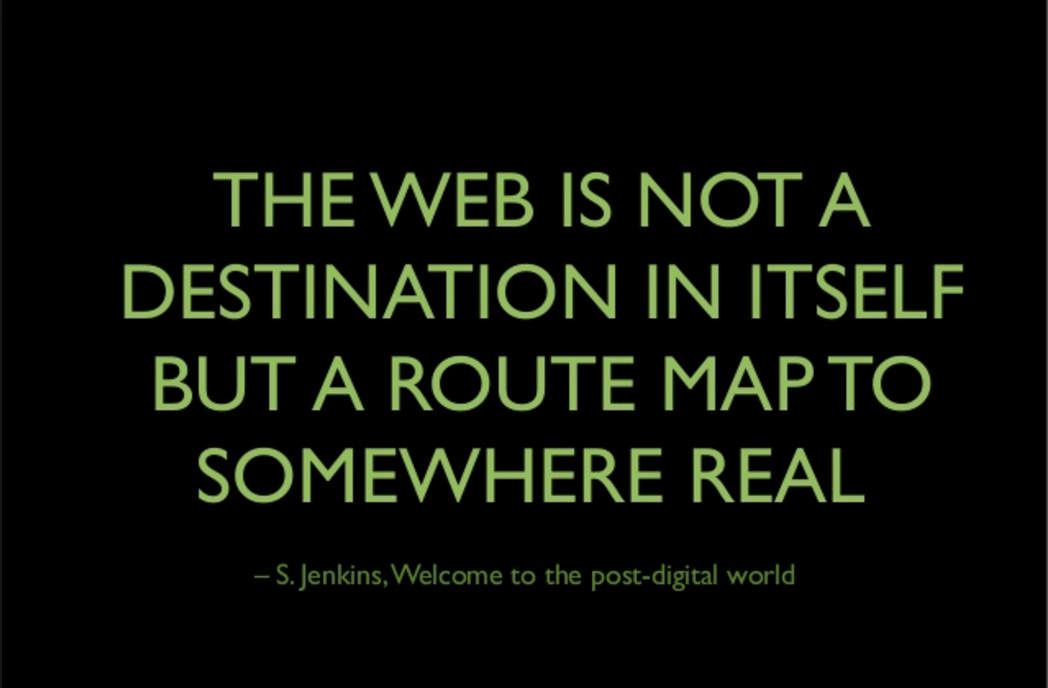
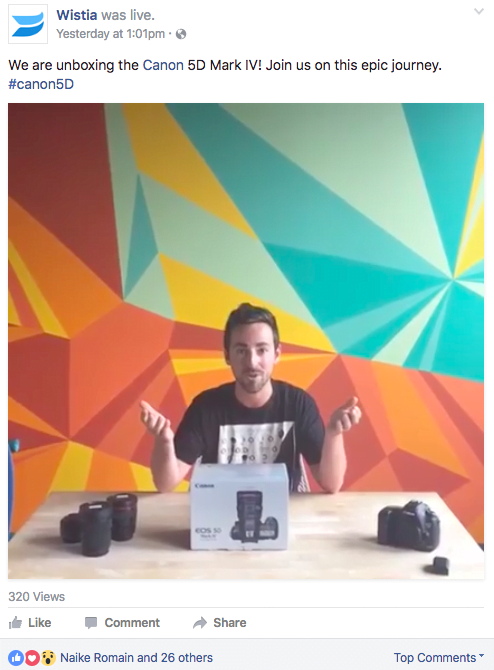









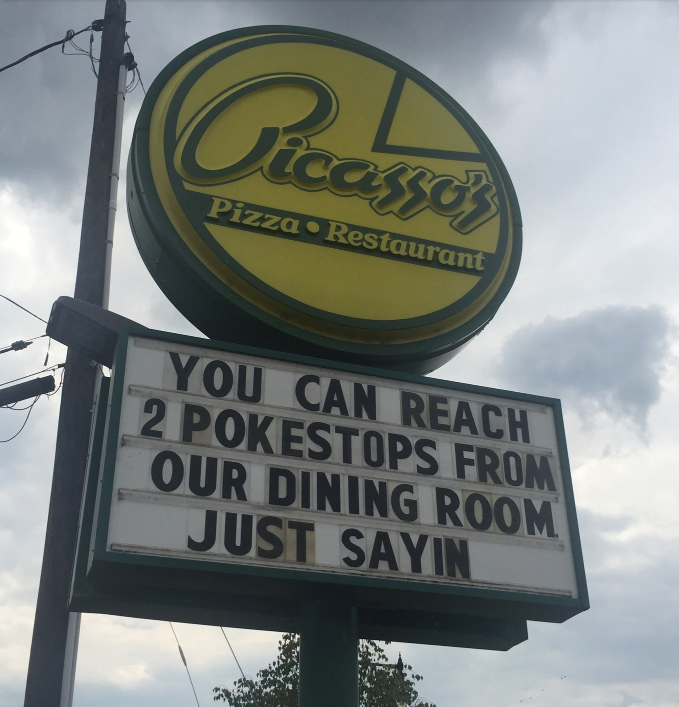
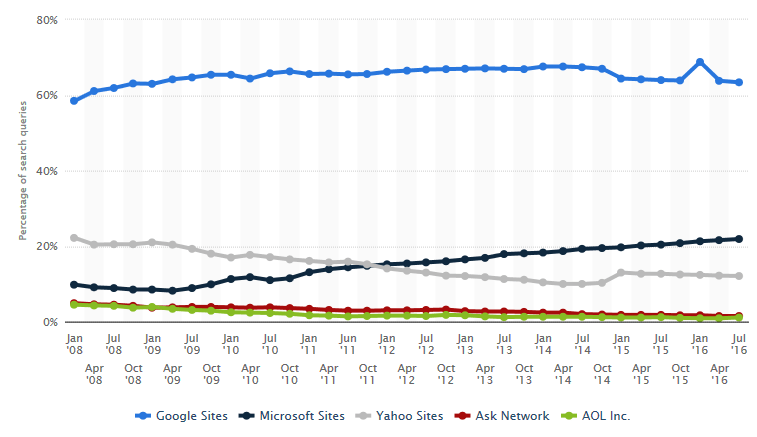
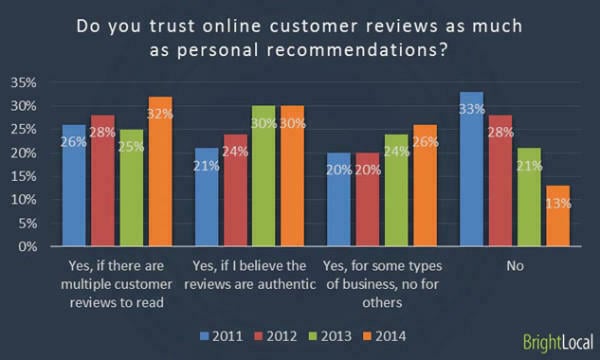
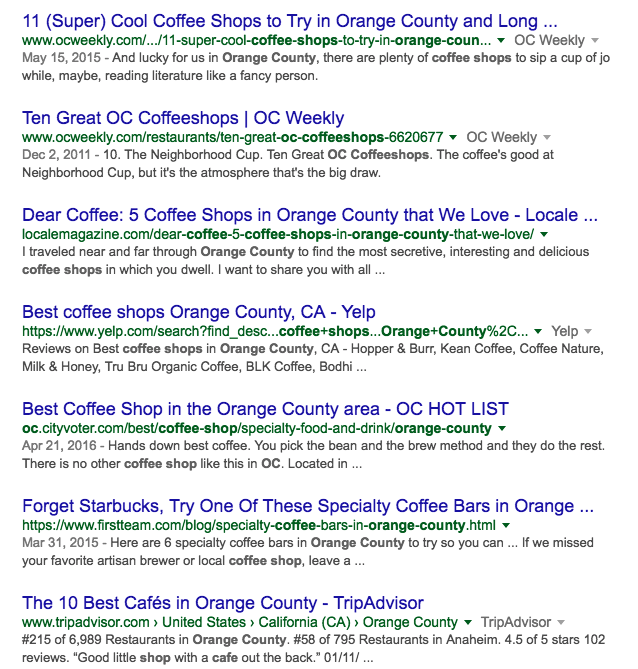


0 Comments